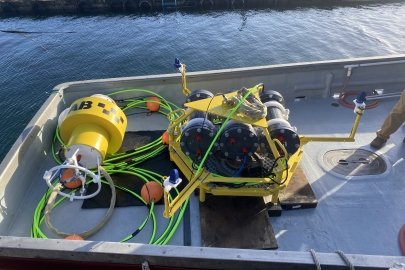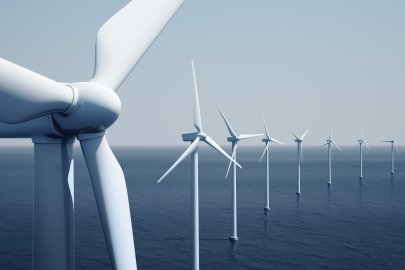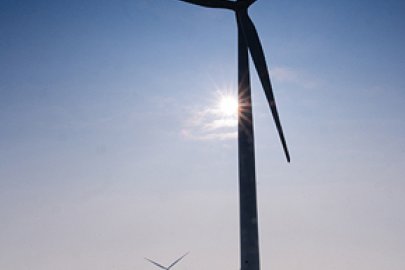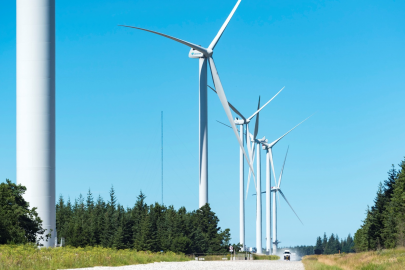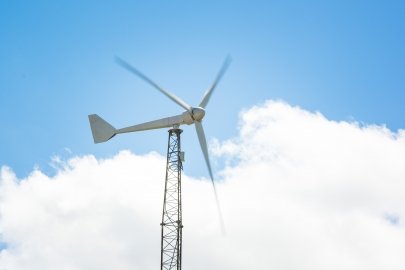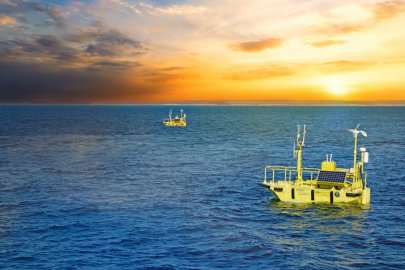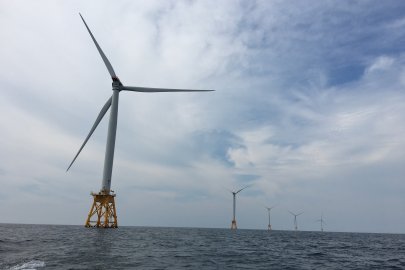Offshore wind turbines can interfere with radar systems used for air traffic control, weather forecasting, and homeland security. To understand potential impacts, the Wind Turbine Radar-Interference Mitigation Working Group hosted a series of webinars.
Wind Energy Technologies Office
June 2, 2021Stakeholders, experts convene to discuss mitigation challenges
As U.S. offshore wind energy project installations increase, so does the importance of understanding the challenges these projects present for government agencies and industries that use sensitive radar systems off U.S. coasts. Research indicates that wind turbines located within the line of sight of radar systems can cause interference, potentially resulting in poor performance of these radar systems. This degradation can present conflicts with radar missions related to air traffic control, weather forecasting, homeland security, and national defense.
Although there are currently only 42 megawatts of offshore wind energy installed off U.S. coasts, the market is primed to grow. To accommodate this growth, it is important that stakeholders understand the potential risk that wind turbines pose to radar systems before a problem arises.
To improve stakeholders’ understanding of offshore wind turbine-radar interference, DOE and Sandia National Laboratories (Sandia) held a series of webinars for the offshore wind industry, federal agencies, and radar experts.
The webinars were designed to build relationships among stakeholders, reveal government and industry perspectives on potential impacts of offshore wind on radar missions, and identify ways the federal government and industry can work together to mitigate these issues.
A steering committee comprising members of the Wind Turbine Radar-Interference Mitigation (WTRIM) Working Group, along with industry representatives from the American Wind Energy Association (now American Clean Power) and Danish offshore wind manufacturer Ørsted, guided the agenda for the webinars.
“Developing an early understanding of the impacts associated with wind turbines and radar systems within the offshore development process is key,” said Ben Karlson, WTRIM project lead for Sandia. “The webinar series fostered this understanding and strengthened relationships among the key stakeholders.”
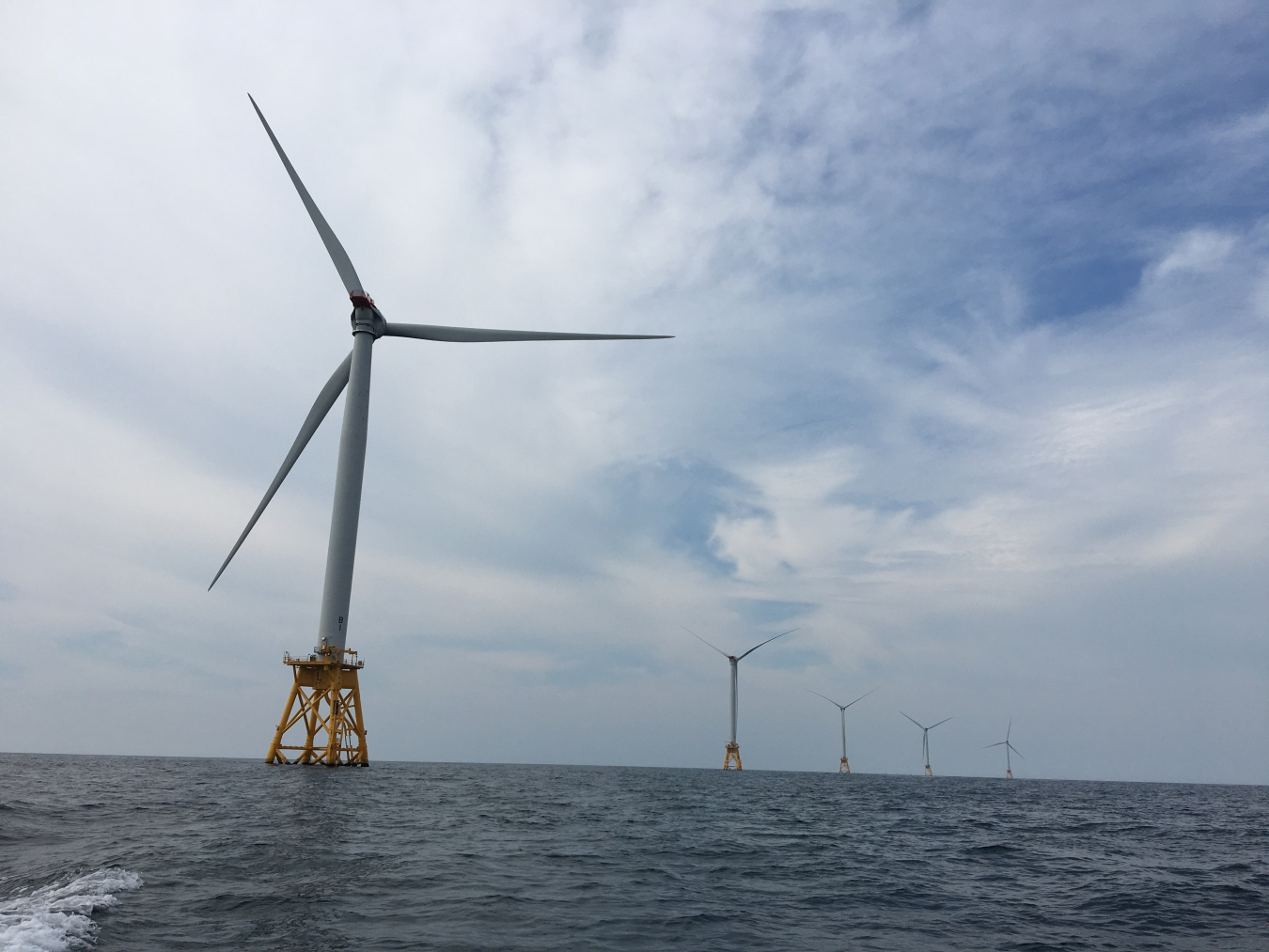
Sandia held a series of webinars that discussed the impacts associated with wind turbines and radar systems within the offshore wind energy development process. This photo shows wind turbines at the Block Island Wind Farm off the Rhode Island coast. Photo by Suzanne Tegen, NREL
The series comprised six topics:
- Wind Turbine Radar Interference Mitigation Working Group Introduction.
Provided background for the series, introduced the WTRIM Working Group, and focused on the offshore wind experience as it relates to radar interference and mitigation in the European Union and United Kingdom.
- U.S. Offshore Project Review Process and Implementing Mitigation Solutions from a WTRIM Perspective.
Focused on the offshore wind experience as it relates to radar interference and mitigation in the United States. This included perspectives from various government agencies that may have missions impacted by potential offshore wind energy development.
- Marine Navigation Radar Systems.
Featured briefings by the U.S. Coast Guard and perspectives from the fishing industry and offshore wind developers regarding impacts on navigation radar used by vessels and ships.
- Oceanographic High-Frequency Radar Systems.
Focused on systems that the National Oceanic and Atmospheric Administration (NOAA) and U.S. Coast Guard use to measure ocean waves near the coast. This webinar included presentations on mission impacts, technical issues, and mitigation options.
- Air Traffic Control Terminal Radar Systems.
Discussed air traffic control terminal radar systems that the Federal Aviation Administration and other federal agencies use at or near airports.
- Long-Range Radar Systems.
Focused on the long-range radar systems that are in use by the Federal Aviation Administration and other federal agencies to maintain air traffic safety as well as other missions.
“These webinars offered fascinating information and perspectives. For instance, during the Oceanographic High-Frequency Radar Systems webinar, NOAA reported that they looked at one proposed offshore wind lease area and, given the current processing parameters of its high-frequency radar systems, estimated that it could lose 30% of the data normally collected for any given hour,” said Karlson. “Based on this, NOAA is working on algorithms that account for the wind turbines’ operational data and will filter the turbines from the radar data.”
The WTRIM Working Group will incorporate information from the webinars into future R&D plans for U.S. offshore wind.
The webinars are available for viewing online.
Subscribe to learn more about WETO R&D projects, news, accomplishments, and recent publications.
Subscribe to the WETO e-newsletter to stay informed on the latest wind energy news, events, publications, and updates.




